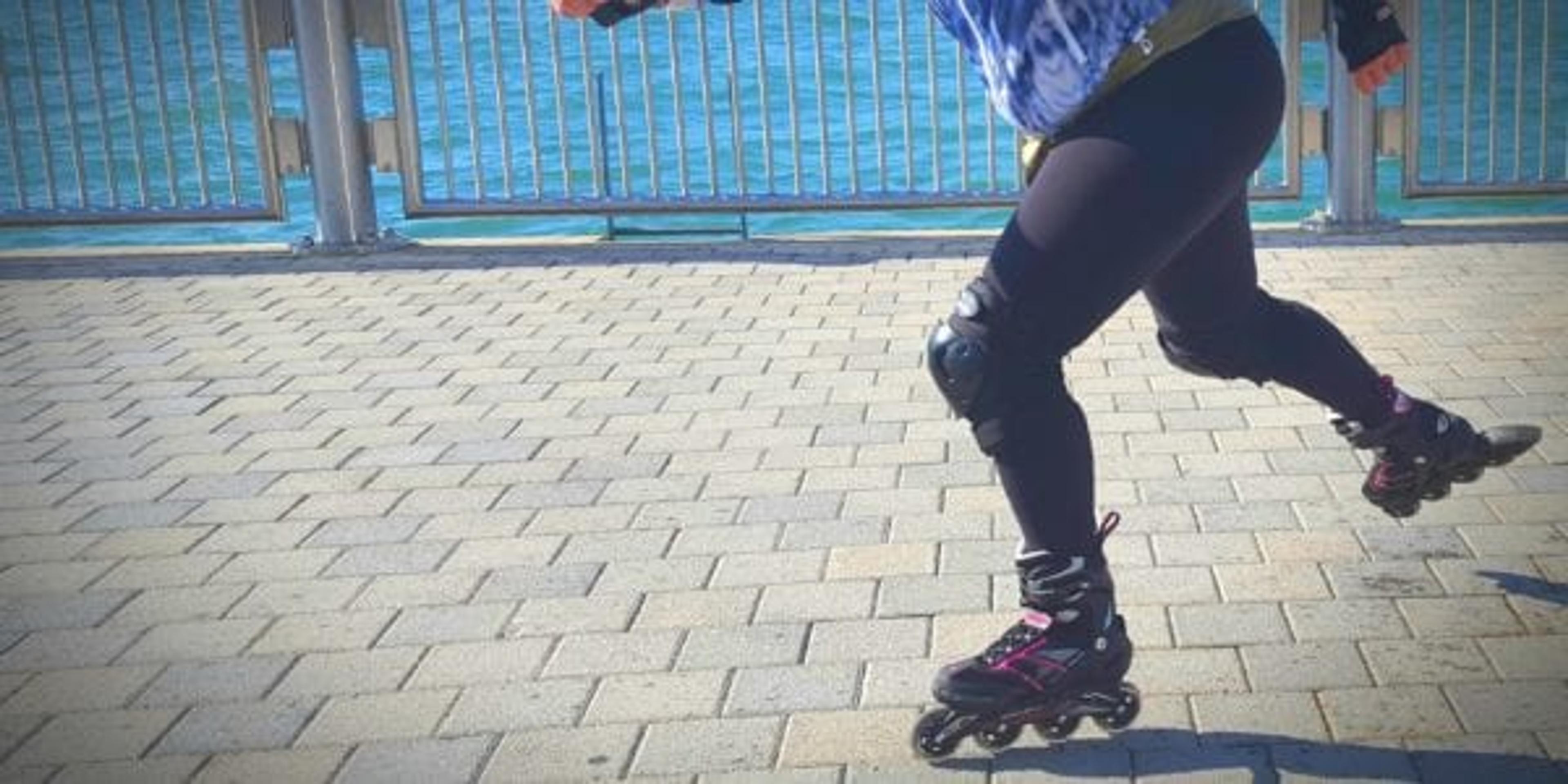Rollerblading: Your Underrated Summer Cardio

Heather Cook
| 3 min read

Looking for something to spice up your workout this summer? Or maybe are you’re in need of another family fun activity to keep your kids active? If either of these are the case, try rollerblading.
Learning to roller blade is like learning to ride a bike. It gives you a sense of accomplishment and an increase in self confidence, which is not only great for kids but adults as well.
Here are a few reasons why rollerblading is a great option for your next workout, as well as a few important safety reminders.
Health Benefits
Rollerblading, otherwise known as inline skating, is a type of low impact aerobic exercise. Low impact exercises such as rollerblading, swimming and yoga can be beneficial alternative to jogging for someone who has joint problems or is just looking for a new cardio routine.
Full benefits from rollerblading occur when your keep your body low while continuously making strides, not just coasting. Bend your knees and lower your upper body to intensify the workout. If you want to take it even further, try interval blading. This is when you go as fast as you can and then slow down to a manageable pace, repeating this process for several sets. This movement acts as a HIIT (high-intensity interval training) exercise that can help with toning in shorter work out sessions.
While rollerblading, you are working your core and lower back muscles, which helps strengthen your balance and coordination skills. If you have kids, teaching your children how to roller blade at an early age helps develop these skills much like ice skating or skiing do.
Getting Started
Try to find moderately smooth paths to blade before you begin. Rough streets not only feel uncomfortable but can cause harm to your wheels. Sticks and rocks can get lodged in the wheel frame and can immediately constrict movement that will make you fall.
Not to worry! There are plenty of places with paths made for this type of activity. Michigan Metro and State Parks have paths for biking, walking and rollerblading that are away from traffic. These parks are all over the state, offering an escape from urban areas and support for outdoor recreation.
Safety Reminders
You are already protecting your joints with this low-impact exercise, but make sure to protect the rest of your body, too.
- Wrist guards: If you trip, your first reaction is to stop the fall with your hands. Without proper protection you risk serious damage to your wrists and hands.
- Elbow and knee pads: Much like you hands, elbows and knees are the next part of your body to be injured if you wipe out. It’s very easy for these joints to hit the ground when bracing for a fall. Wearing protective padding over them helps prevent getting injured. Pads for rollerblading should have a plastic outer shell that protects from cuts and scrapes.
- Helmets: It is just as important to wear a properly fitted helmet whether you’re biking, boarding or rollerblading. There are helmets specifically designed for this activity with more coverage on your forehead and behind your neck, but wearing any type of helmet will help keep your head safe.
- Be aware of your surroundings: If you are rollerblading through a neighborhood, take as many precautions as you would when running. Look out for cars, other people and especially a change in surface. Going to state or city park locations that have clean, traffic-free paths can help improve your safety.
Photo Credit: Angelina Truchan, A Healthier Michigan





